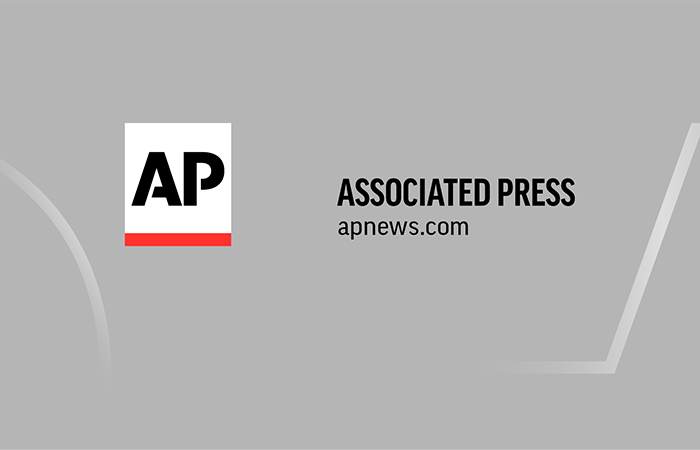The Storm Ahead: NOAA's Staffing Crisis and the Looming Threat of Climate Change
June 5, 2025, 9:44 am
The National Oceanic and Atmospheric Administration (NOAA) stands at a crossroads. As the agency prepares for a tumultuous hurricane season, it faces a daunting staffing crisis. The recent cuts have left weather forecast offices scrambling. The stakes are high. Lives hang in the balance.
Climate change is no longer a distant threat. It’s here, and it’s wreaking havoc. Greenhouse gas emissions have turned storms into monsters. Hurricanes are more frequent, more intense, and more destructive. Tornadoes are popping up like weeds in a garden. The need for accurate weather forecasting has never been greater.
NOAA’s mission is clear: warn the public. Provide timely alerts. Give people the chance to evacuate or find shelter. But with reduced staffing, this mission is in jeopardy. Forecast offices have cut hours. Some no longer operate overnight. This is a recipe for disaster.
Experts are sounding the alarm. A staffing shortage means less accurate forecasts. This could lead to chaos during extreme weather events. The economy is at risk. When storms hit, they don’t just disrupt lives; they disrupt livelihoods. Businesses suffer. Recovery takes years.
In 2024, NOAA achieved remarkable accuracy in hurricane forecasting. This success was no accident. It was the result of a fully funded agency. Now, that funding is in jeopardy. The Trump administration’s policies have left NOAA vulnerable. The consequences are dire.
The scientific community is watching closely. They know that accurate forecasts save lives. They know that timely warnings can mean the difference between safety and tragedy. As the climate crisis deepens, the need for robust weather services grows. Yet, NOAA is being forced to operate with one hand tied behind its back.
The upcoming hurricane season is predicted to be busy. The signs are clear. The atmosphere is charged. Storms are brewing. NOAA needs to be ready. But how can it prepare when it’s understaffed? The answer is simple: it can’t.
The impact of climate change is not just a future concern. It’s a present reality. Communities across the U.S. are feeling the heat. From wildfires in the West to floods in the East, the effects are widespread. The need for reliable weather forecasting is urgent. Lives depend on it.
As NOAA seeks to hire for “mission-critical” positions, the question remains: will it be enough? The agency needs skilled meteorologists, data analysts, and support staff. It needs a workforce that can rise to the occasion. But hiring takes time. The clock is ticking.
The implications of this staffing crisis extend beyond weather forecasting. They touch on public safety, economic stability, and community resilience. When storms strike, people look to NOAA for guidance. They expect timely updates and accurate information. If NOAA fails to deliver, the consequences could be catastrophic.
The recent cuts have not only affected staffing levels. They have also eroded public trust. People are anxious. They want to know that someone is watching over them. They want to feel secure in the face of nature’s fury. But with reduced resources, NOAA’s ability to provide that assurance is compromised.
As the agency navigates this challenging landscape, it must also contend with political pressures. Climate change has become a polarizing issue. Some deny its existence, while others demand immediate action. NOAA is caught in the crossfire. It must remain focused on its mission, even as external forces threaten to derail it.
The need for investment in NOAA is clear. The agency requires funding to build a robust workforce. It needs resources to enhance its forecasting capabilities. Without these investments, the nation’s weather service will struggle to keep pace with the changing climate.
The stakes are high. The consequences of inaction are dire. Lives are on the line. As the hurricane season approaches, the urgency grows. NOAA must act swiftly. It must hire the talent it needs to fulfill its mission. The time for action is now.
In conclusion, NOAA is at a critical juncture. The agency faces a staffing crisis just as the climate crisis intensifies. The need for accurate weather forecasting has never been more pressing. As storms loom on the horizon, the question remains: will NOAA be ready? The answer lies in the agency’s ability to secure the resources it needs. The clock is ticking, and the storm is coming.
Climate change is no longer a distant threat. It’s here, and it’s wreaking havoc. Greenhouse gas emissions have turned storms into monsters. Hurricanes are more frequent, more intense, and more destructive. Tornadoes are popping up like weeds in a garden. The need for accurate weather forecasting has never been greater.
NOAA’s mission is clear: warn the public. Provide timely alerts. Give people the chance to evacuate or find shelter. But with reduced staffing, this mission is in jeopardy. Forecast offices have cut hours. Some no longer operate overnight. This is a recipe for disaster.
Experts are sounding the alarm. A staffing shortage means less accurate forecasts. This could lead to chaos during extreme weather events. The economy is at risk. When storms hit, they don’t just disrupt lives; they disrupt livelihoods. Businesses suffer. Recovery takes years.
In 2024, NOAA achieved remarkable accuracy in hurricane forecasting. This success was no accident. It was the result of a fully funded agency. Now, that funding is in jeopardy. The Trump administration’s policies have left NOAA vulnerable. The consequences are dire.
The scientific community is watching closely. They know that accurate forecasts save lives. They know that timely warnings can mean the difference between safety and tragedy. As the climate crisis deepens, the need for robust weather services grows. Yet, NOAA is being forced to operate with one hand tied behind its back.
The upcoming hurricane season is predicted to be busy. The signs are clear. The atmosphere is charged. Storms are brewing. NOAA needs to be ready. But how can it prepare when it’s understaffed? The answer is simple: it can’t.
The impact of climate change is not just a future concern. It’s a present reality. Communities across the U.S. are feeling the heat. From wildfires in the West to floods in the East, the effects are widespread. The need for reliable weather forecasting is urgent. Lives depend on it.
As NOAA seeks to hire for “mission-critical” positions, the question remains: will it be enough? The agency needs skilled meteorologists, data analysts, and support staff. It needs a workforce that can rise to the occasion. But hiring takes time. The clock is ticking.
The implications of this staffing crisis extend beyond weather forecasting. They touch on public safety, economic stability, and community resilience. When storms strike, people look to NOAA for guidance. They expect timely updates and accurate information. If NOAA fails to deliver, the consequences could be catastrophic.
The recent cuts have not only affected staffing levels. They have also eroded public trust. People are anxious. They want to know that someone is watching over them. They want to feel secure in the face of nature’s fury. But with reduced resources, NOAA’s ability to provide that assurance is compromised.
As the agency navigates this challenging landscape, it must also contend with political pressures. Climate change has become a polarizing issue. Some deny its existence, while others demand immediate action. NOAA is caught in the crossfire. It must remain focused on its mission, even as external forces threaten to derail it.
The need for investment in NOAA is clear. The agency requires funding to build a robust workforce. It needs resources to enhance its forecasting capabilities. Without these investments, the nation’s weather service will struggle to keep pace with the changing climate.
The stakes are high. The consequences of inaction are dire. Lives are on the line. As the hurricane season approaches, the urgency grows. NOAA must act swiftly. It must hire the talent it needs to fulfill its mission. The time for action is now.
In conclusion, NOAA is at a critical juncture. The agency faces a staffing crisis just as the climate crisis intensifies. The need for accurate weather forecasting has never been more pressing. As storms loom on the horizon, the question remains: will NOAA be ready? The answer lies in the agency’s ability to secure the resources it needs. The clock is ticking, and the storm is coming.

